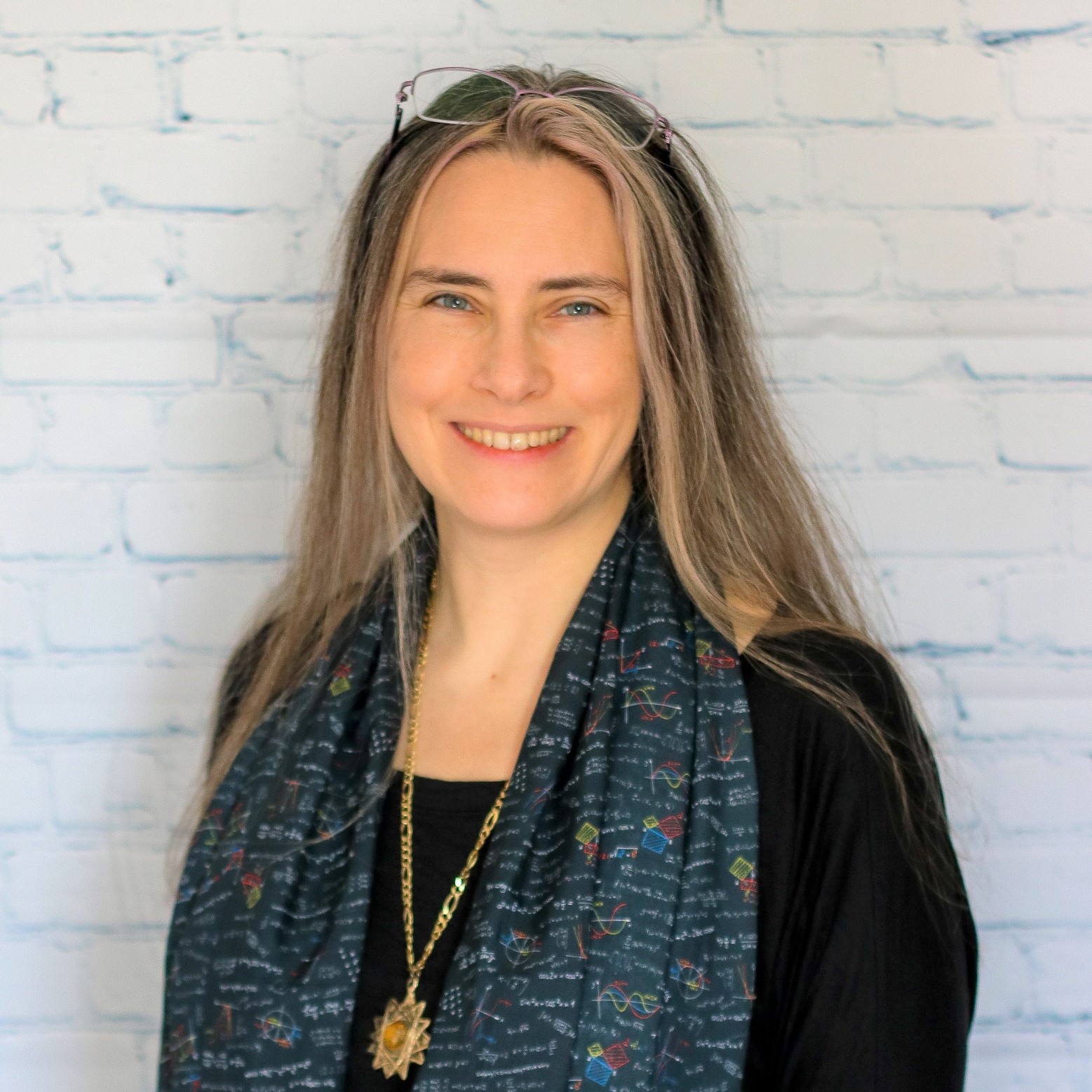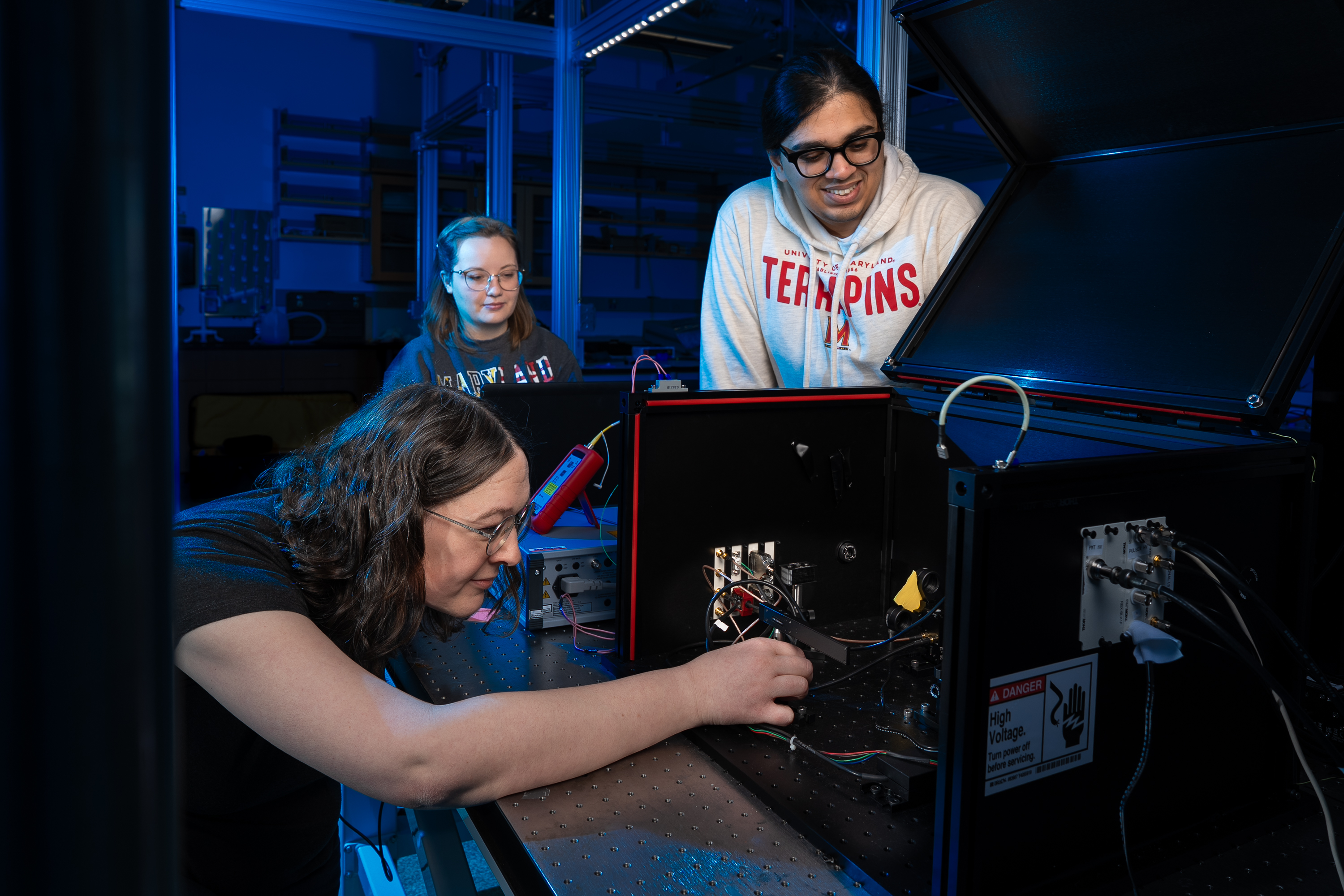Maryland Gov. Wes Moore Announces $1B ‘Capital of Quantum’ Initiative Centered at UMD
- Details
- Category: Department News
- Published: Wednesday, January 29 2025 01:40
aryland Gov. Wes Moore on January 14, 2025, joined University of Maryland President Darryll J. Pines and IonQ President and CEO Peter Chapman to announce a landmark public-private partnership to catalyze $1 billion in investments and position the state as a global leader in quantum information science and technology.
Maryland Gov. Wes Moore speaks to the crowd at IonQ on January 14, 2025. Photo by Stephanie S. Cordle.
The “Capital of Quantum” initiative was introduced at an event highlighting Moore’s 2025 economic growth agenda held at IonQ, a leading quantum computing and networking firm founded on UMD research and headquartered in the university’s Discovery District.
“Quantum has the potential to transform every part of our economy and society, from national security to health care,” said Moore. “With extraordinary assets and partnerships, Maryland can—and should—lead in this new emerging sector, and we are moving forward with a clear strategy to make that vision a reality. Together, we will make Maryland the quantum capital of the world."
This strategic partnership aims to unlock more than $1 billion in investments—a combination of state funds, matching federal grants, private-sector investments and philanthropic contributions—over the next five years.
Moore last month signed an executive order that identified quantum computing as an industry that his and Lt. Gov. Aruna Miller’s administration will prioritize through state investment and support. His FY26 budget submission includes $27.5 million as the state’s initial investment toward the Capital of Quantum initiative, which is expected to spur more than $200 million in University of Maryland and partner investments to support academic, technical, workforce and ecosystem support.
The Moore-Miller administration has also committed continued funding for the construction of Zupnik Hall, a new $244 million state-of-the-art facility that includes more than $58 million in private investments and $185.4 million from the state, and which will add more quantum labs to the UMD campus.
“We are deeply grateful to Gov. Moore for his visionary investment in building a brighter future for Maryland’s economy,” said Pines. “He recognizes the immense potential of quantum technology and the possibilities we can explore if we work together to position our region as the global Capital of Quantum. We look forward to collaborating with the governor’s office and regional partners to ensure that this investment yields lasting benefits for all Marylanders.”
With the launch of the Capital of Quantum Initiative, the University of Maryland will move forward with plans to:
- Recruit top quantum scientists and engineers from around the world to join the ranks of 200-plus UMD quantum faculty members—one of the largest concentrations in the world—to usher in a new wave of discovery and innovation.
- Expand access to the National Quantum Laboratory (QLab), a unique UMD partnership with IonQ that provides students, researchers and entrepreneurs from around the world with hands-on access to quantum computers and scientists.
- Hire test and evaluation experts to support quantum-focused projects and construct a new building for UMD’s Applied Research Laboratory for Intelligence and Security.
- Create additional facilities to house an expanded Quantum Startup Foundry, a business accelerator based in UMD’s Discovery District that provides resources and support for entrepreneurs and startups bringing quantum technologies to market.
- Launch education, outreach and training initiatives to include high school quantum curriculum, master’s and certificate programs, and workforce retraining opportunities.
Subject to the governor’s budget being approved, IonQ, an anchor partner in the initiative, will grow its corporate headquarters into a 100,000-square-foot facility with a data center, laboratories and office space within UMD’s Discovery District. IonQ also intends to double its corporate headquarters workforce to at least 250 people in the Maryland region over the next five years. Tuesday's announcement, once approved by the legislature, is expected to create high-paying and skilled jobs in diverse fields such as construction, software and hardware engineering, operations, applied physics, networking and more.
Investments in quantum computing are investments in Maryland's future, said Chapman.
“Through Gov. Moore’s strategic economic development initiative and proposed investment in quantum, he is not only supporting cutting-edge research and innovation but fostering economic growth and job creation in the state,” he said. “The governor's commitment is a testament to his vision for the pivotal role that quantum science will play in the state’s economic development and technological leadership. This investment will also enhance our collaboration with the University of Maryland to solidify the region as a global leader in quantum innovation.”
Original story: https://cmns.umd.edu/news-events/news/maryland-gov-wes-moore-announces-1-billion-capital-quantum

